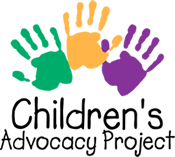What is Human Trafficking?
Human Trafficking can happen in any community and victims can be any race, range in age, and be any gender. Traffickers often use violence, manipulation, and false promises of jobs, money, or a romantic relationship on victims.
Human Trafficking is the use of force, fraud and coercion to obtain labor or commercial sex acts. Millions of men, women, and children are trafficking worldwide and in the United States.
In order for us all to work together to prevent and end human trafficking it is important to understand what human trafficking is, the statistics, how to recognize trafficking, the effects of human trafficking, where to report it.
Human trafficking can have consequences and implications that span far beyond the act of trafficking itself. Victims can be left with trauma that can span a lifetime.
Statistics:
-
An estimated 24.9 million victims around the world are trapped in modern day slavery
-
Human Trafficking earns profits of roughly $150 billion a year for traffickers
-
Sex exploitation makes up $99 billion of that
-
-
In 2020, the Human Trafficking Hotline reported 10,582 human trafficking cases
-
Of those 10,582 cases
-
7,648 were sex trafficking
-
8,447 were female victims
-
2,488 of the were minors
-
-
43% of human trafficking victims are found, captured, and enslaved within domestic borders
-
Human trafficking victims spend an average of 20 months in forced labor or sex trafficking
-
Check out The Blue Campaign’s Infographic for a great visual on human trafficking.
Types of Human Trafficking:
There are two types of human trafficking, forced labor and sex trafficking. In both cases, force, fraud and coercion are used to exploit, manipulate, and abuse victims.
- Labor Trafficking: Forced Labor occurs when individuals are made to perform work or provide a service through the use of force, fraud, or coercion.
- Sex Trafficking: Victims are manipulated and forced to preform commercial sex acts to bring in a profit for traffickers. Sex trafficking happens to both adults and minors.
How to recognize Human Trafficking:
Everyone has a role to play when it comes to combatting human trafficking. Learning the signs of trafficking can be the first step in being able to identify a victim.
- Has the child stop attending school?
- Is there a sudden change in behavior?
- Does the person appear to be disconnected from friends, family, or community organizations?
- Does the person have bruises in various stages of healing?
- Is the person disoriented, confused, or showing signs of mental and/or physical abuse?
- Is the person fearful, timid, or submissive?
- Does the person show signs of maltreatment or neglect: denied food, water, sleep, medical attention, or living in unsuitable conditions?
- Is the person often accompanied by someone they defer to or who seems to be in control of every situation?
- Does the person appear to be coached in what to say?
Above are not all indicators of human trafficking, the absence or presence of any indicators is not necessarily proof of human trafficking.
Action Means Purpose Model “AMP”
The AMP model is a device used to illustrate human trafficking as defined by the federal government.
Human Trafficking occurs when a perpetrator, often referred to as a trafficker, takes any of the following action, employs them by means of force, fraud or coercion for the purpose of forcing the victim into labor/services or commercial sex.
One component of each AMP element must be present to determine if the situation is potentially human trafficking.
AMP: Action + Means + Purpose = Human Trafficking
Action – refers to how the trafficker comes in contact with the victim:
- Induces
- Recruits
- Harbors
- Transports
- Provides
- Obtains
Means – the way a perpetrator keeps a victim working:
- Force
- Abduction
- Threats
- Abuse
- Coercion
- False Promises
- Deception
- Drug Addiction
- Fraud
- Promise of benefits or payments
Purpose – the ultimate goal of human traffickers, exploitation of human beings for:
- Commercial Sex (sex trafficking)
- Labor/Services (labor trafficking)
* Remember that under federal law, any minor under the age of 18 years induced into commercial sex is considered to be a victim of sex trafficking— regardless of any indicators of force, fraud, or coercion.
How to protect yourself and others:
- Check our the Blue Campaign’s webage on how to protect yourself:
- Tips include: If a job offer sounds “too good to be true” it probably is
- Indicators you are in a potentially exploitive relationship
- Online safety information
If you or someone you know is experiencing an exploitive situation and needs help, you can:
Tell a trusted adult
Call 911 or local law enforcement if you are in immediate danger
Get in touch with the Trafficking Hotline: call 1-888-373-7888 or text HELP or INFO to 233733
Report suspected child sex trafficking, sextortion, online enticement, and sexual abuse material to the Nation Center for Missing and Exploited Children: call 1-800-THE-LOST (1-800-843-5678) or go to CyberTipline.org
Call 1-866-347-2423 to report suspicious criminal activity to the Homeland Security Investigations (HSI) Tip Line. You can also submit an anonymous tip online via the HSI Tip Form.
Other Child Abuse Prevention Resource:
https://www.wyomingcac.org/prevent-child-abuse/resources
Sources: Florin Roebig | Blue Campaign | AMA Model | Hotline Statstics

